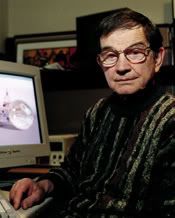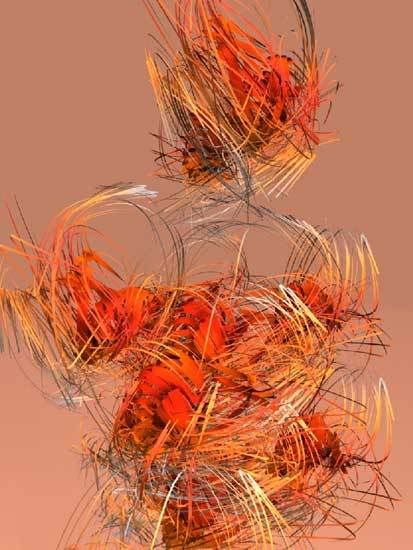Biography
 Charles A. Csuri is an artist and computer graphics pioneer and a professor at The Ohio State University and a former All America Football player. In 1964, he started to experiment with computer graphics technology, with limited sources however, a year later he began creating computer animated films. The 4th International Experimental Film Festival in 1967 at Brussels, Belgium, he was awarded him the prize for animation. One of his computer films is also in the collection of New York's Museum of Modern Art
Charles A. Csuri is an artist and computer graphics pioneer and a professor at The Ohio State University and a former All America Football player. In 1964, he started to experiment with computer graphics technology, with limited sources however, a year later he began creating computer animated films. The 4th International Experimental Film Festival in 1967 at Brussels, Belgium, he was awarded him the prize for animation. One of his computer films is also in the collection of New York's Museum of Modern Art.
For over 22 years and with the support of National Science Foundation, the Navy, and the Air Force Office of Scientific Research, he has directed research projects in computer graphics. This covered 15 major projects and over 8 million dollar of funding. More than forty graduate students in computer science were engaged in the research. In addition, there were over fifty students from the field of art.
Ohio State University awarded him the ‘Joseph Sullivant Medal’ which is their highest honor. The award is made on the basis of alumni or a faculty member's work which has had a significant impact upon society. It is awarded only once every five years.
Infinite Digital Art
Charles got the concept of Infinite Digital Art in 1966 just after he created “Flies” and “Random War” in which he used a random number generator to produce a series of images dealing with flies and another with soldiers. In his 3-d world of objects, Charles gives these objects behaviors and so they have to respond to the rules. For example, each of them has their own individual properties such as lighting, rotation angles, or even the atmosphere. Then, the objects copy themselves or change entirely to a different object at any instance.



Charles defines many functions which can be used to make changes to the objects and their relationship to one another. One function can be applied to just one aspect of an object. For example, lines and their thickness can be represented by a mathematical function, b-spline function. The line thickness can change to all directions such as front to back or from the right side to the left side. The density of each objects atmosphere is set with parameters in another function.
His animation process basically consists of 5 main functions. He applies these functions to create his animation art.
- Uses algorithms representing parameters
- These algorithms determine visual elements (i.e. color, shape, lighting)
- Programming strategies to create random variation and levels of control
- Setting limitations to position scale, rotation angles, etc
- The software keeps track of pervious parameters to make changes
And the software?
Charles writes his animation art in AL Language (Animation Language) combined with a mathematical function called the b-spline. The AL language is an extension of Scheme which is a LISP-like language which is powerful and general purpose, but relatively easy to learn and use. It is an environment for procedural computer animation which provides powerful modeling language. This allows him to create his art in a more elegant and beautiful way. The founder of the AL program helped Charles to write the b-spline function and the geometry of the objects are include to work with Renderman and BRMT. The built in functions in the program helps to improve the quality of his art.
Critics
From New York Times, Mattew Mirapaul, added a statement in his article by Barbara London of the Museum of Modern Art quoting the following:
“What [Csuri] did was way ahead of his time," said Barbara London, MOMA's associate curator of film and video. "I put him in a league with people like Ed Emshwiller, who came out of painting and science-fiction illustration. They really had a vision of how to use these tools."
This statement basically outlines the understanding Charles had of the tools/software he used to create his art. Ed Emshwiller was one of the best during the 1960’s in computer animated films. Therefore, Barbara rates Charles as the same league as Ed Emshwiller.


 Charles A. Csuri is an artist and computer graphics pioneer and a professor at The Ohio State University and a former All America Football player. In 1964, he started to experiment with computer graphics technology, with limited sources however, a year later he began creating computer animated films. The 4th International Experimental Film Festival in 1967 at
Charles A. Csuri is an artist and computer graphics pioneer and a professor at The Ohio State University and a former All America Football player. In 1964, he started to experiment with computer graphics technology, with limited sources however, a year later he began creating computer animated films. The 4th International Experimental Film Festival in 1967 at 





0 Comments:
Post a Comment
Subscribe to Post Comments [Atom]
<< Home